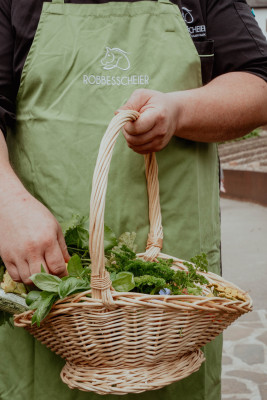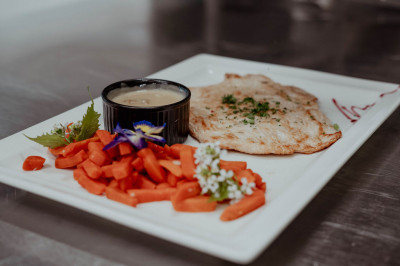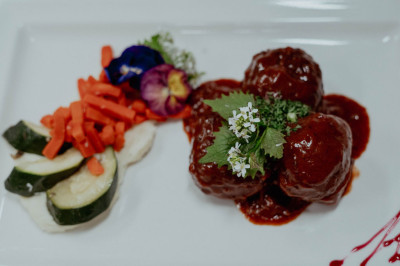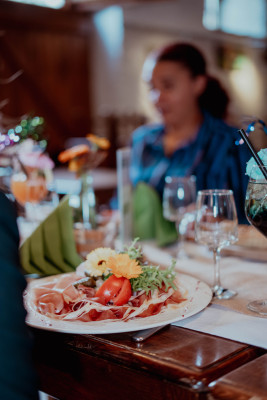
Robbesscheier masters the art of “homemade” and “locally sourced”. Their vegetables, fruits, and herbs come directly from the estate’s gardens and orchards. Other ingredients come as much as possible from the Our Nature Park or from national brands. They also offer a “0 km suggestion” that changes with the seasons — a 100% local plate celebrating the natural bounty of the moment.
The menu evolves with the seasons but maintains a constant: highlighting northern products. Naturschutzfleesch beef, a Luxembourg label guaranteeing exceptional meat from sustainable and animal-friendly farms, holds a place of honor.
Alongside it, game — emblematic of our forests — often returns to the menu, especially in autumn and winter. Trout and crayfish from the Our River bring the freshness of nearby waters to our plates.
Because responsible cuisine is first and foremost inclusive, Robbesscheier always offers vegetarian options and dishes rich in plant-based flavors. Our chefs draw inspiration from the estate’s gardens to create colorful, balanced plates without ever sacrificing indulgence. Local villagers also join at lunchtime for the daily menu, always served with a soup and dessert of the day that guests can choose from the display.



Over thirty years ago, the youth of Munshausen transformed part of Robert’s farm into a village café.
Since then, this place has become much more than a restaurant: a symbol of authenticity, exchange, and respect for nature.
Even today, every meal at Robbesscheier retains that warm, welcoming spirit of the past — a table open to all, simple, generous, and deeply rooted in its territory.
1 4
The restaurant is open daily, with an annual one-week closure.
The kitchen is open from 12:00 to 14:00 and from 18:00 to 20:30. The bar is open from 08:00 to 22:00.